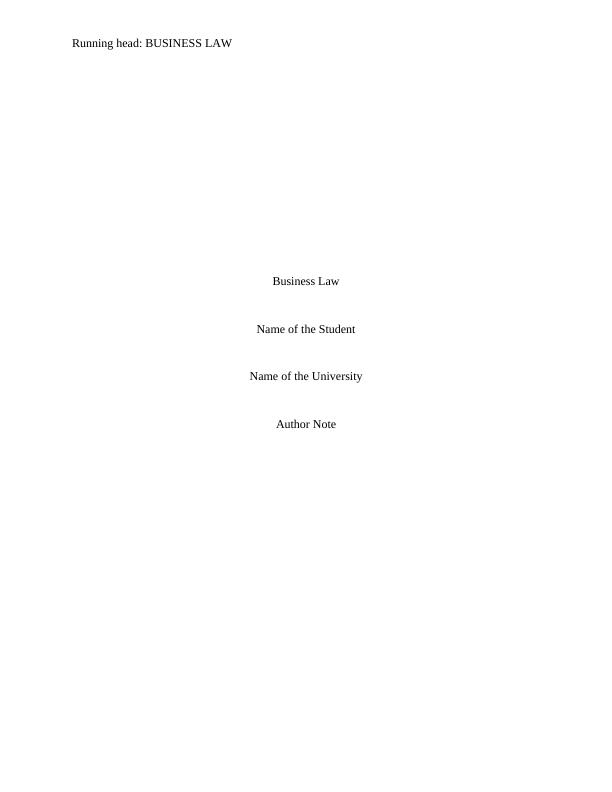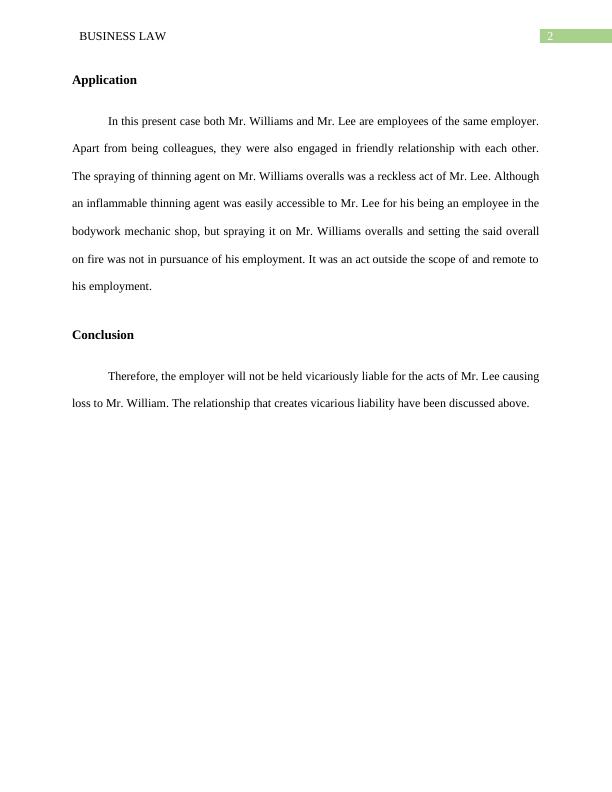Business Law
Mr. William appeals the judgment arguing that the defendant employer had created a risk of injury by requiring employees to work with thinners, and that Mr. Lee's conduct was closely connected to his employment.
7 Pages942 Words268 Views
Added on 2023-04-19
About This Document
This document discusses the concepts of business law, specifically focusing on vicarious liability and trademark infringement. It provides an overview of the principles and rules related to these topics and applies them to relevant case studies. The document also explores the jurisdiction of courts in handling trademark infringement cases.
Business Law
Mr. William appeals the judgment arguing that the defendant employer had created a risk of injury by requiring employees to work with thinners, and that Mr. Lee's conduct was closely connected to his employment.
Added on 2023-04-19
ShareRelated Documents
End of preview
Want to access all the pages? Upload your documents or become a member.



